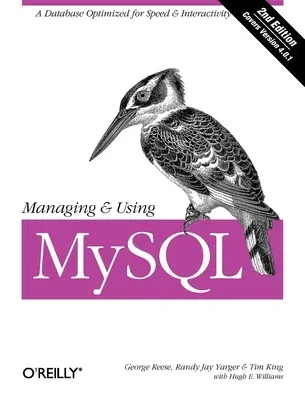MySQL is a popular and robust open source database product that supports
key subsets of SQL on both Linux and Unix systems. MySQL is free for
nonprofit use and costs a small amount for commercial use. Unlike
commercial databases, MySQL is affordable and easy to use. This book
includes introductions to SQL and to relational database theory. If you
plan to use MySQL to build web sites or other Linux or Unix
applications, this book teaches you to do that, and it will remain
useful as a reference once you understand the basics. Ample tutorial
material and examples are included throughout.
This book has all you need to take full advantage of this powerful
database management system. It takes you through the whole process from
installation and configuration to programming interfaces and database
administration. This second edition has a greatly enhanced
administration chapter that includes information on administrative
tools, server configuration, server startup and shutdown, log file
management, database backup and restore, and database administration and
repair. In addition, a new chapter on security describes data, server,
and client-server security, while a chapter on extending MySQL provides
an overview of MySQL internals and describes the use of MySQL
user-defined functions.
If you know C/C++, Java, Perl, PHP, or Python, you can write programs to
interact with your MySQL database. In addition, you can embed queries
and updates directly in an HTML file so that a web page becomes its own
interface to the database. Managing and Using MySQL includes chapters on
the programming language interfaces, and it also includes a complete
reference section with specific function calls for each language.
Also included in the reference section are references to the SQL
language, and details of the MySQL system variables, programs, and
utilities. New to the second edition is a reference to the internal
MySQL tables, which will be of particular interest to those who want to
work extensively with MySQL security.

